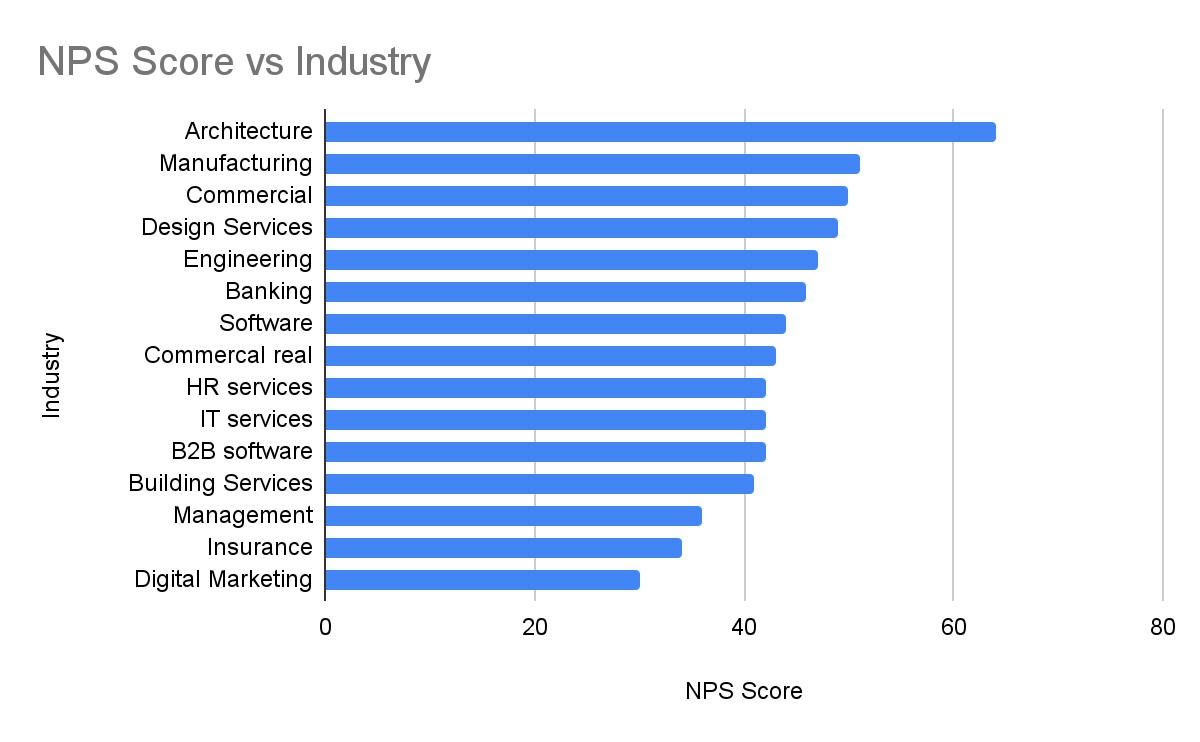Customer experience has become a hot topic lately. As extensive research has been conducted, many conclusions have pointed to the impact employee experience has on the experiences your customers have. We all know that the better experience your customers have, the more customer loyalty your brand has. It’s more expensive to try and attract new customers than it is to retain current ones. For that reason, taking customer experience seriously may have a large impact on your bottom line.
To improve customer experience, a strategy must be implemented with processes and actionable steps. If you’re reading this blog post, you are likely unsure how to create a customer experience strategy in the first place. That’s why we created this blog post. We hope it helps you develop a loyal fan base. To make this vision a reality, read on.
Start by Measuring and Understanding Data
To begin implementing any business strategy, it’s important to find a baseline. You can’t know if your strategies are working if you don’t have a starting point to compare to. One common measurement for customer experience utilizes NPS (Net Promoter Scores). NPS helps you analyze customer loyalty from within your customer base. Scores received will range from negative 100 to positive 100. Any number above zero is considered a good score. Examples of NPS questions are:
- How likely are you to recommend Summit CPA Group to a friend or family member?
- How was your call experience today?
Survey participants rank their responses to these questions on a scale from 1 to 10. Responses received are then broken out into detractors (0-6), passives (7 and 8), and finally promoters (9 and 10). To get a final NPS, the percentage of detractor responses received are subtracted from the percentage of promoter responses received. This value will ultimately, as previously mentioned, fall between -100 and +100.
NPS does more than provide you with a baseline score measuring customer loyalty. Responses received by NPS surveys can clue you into improvements that could be made to your customer experience strategy. Defining a customer experience strategy for your business requires focus and clear processes.
Once you have a baseline measurement for customer experience, you can start determining what initiatives could improve your NPS rating over time.
Customers who rate your company with 9s and 10s are brand advocates. They already feel that their experience as a customer is fantastic. Determining why these customers feel so strongly towards your brand can help you find out what practices should be continued.
Those who rate your company with 7s and 8s are in the perfect position to become future brand advocates. Determining how they feel that their experience could be improved can help your company implement strategy initiatives. Finding that one thing that could turn these customers into promoters is vital to your brand.
While it might feel intimidating to dive into the feedback of customers giving scores of 0 to 6, determining how you can solve your customer’s pain points can significantly shift the needle on brand perception. Your detractors can quickly turn to social media, Google, friends and family, or other means to share their dissatisfaction. We all know how quickly messages online can spread.
What is most surprising is that many times your biggest brand advocates may have previously been detractors. When you showcase your dedication to solving problems experienced by your customers, you also show how seriously you take their feedback. By showing loyalty to customers, you may find that your customers become loyal to you, as well.
Involve Your Team
To create brand advocates, your team must go beyond measuring. The key to an impactful customer experience strategy begins by interpreting feedback and turning it into action. Your teammates must leverage advocates and address concerns of your detractors.
Sharing survey results with your team helps scale your customer experience strategy quickly. After all, many of your team members will be implementing the tactics within your strategy. Furthermore, your customer-facing employees will have inside knowledge of the pain points customers are experiencing and potential solutions.
Present feedback you’ve received from experience surveys and give your employees a chance to share feedback they may have received. Once you have done that, have meetings with your team members and give them a chance to help find solutions to various problems that may be experienced by customers.
Data shows that positive reinforcement can be the motivation needed for new initiatives being efficiently implemented. Recognizing the hard work your employees complete can go a long way to improving customer experience. Another way to incentivize employees is through rewards or recognition programs.
Explaining to employees how they are a piece of the bottom line and impact business outcomes is another motivation strategy. Showing employees how their jobs affect the company can empower and motivate them to make a difference within it by changing customer experience.
Tying survey results to specific team members can help determine which employees may require support or feedback. It can also help determine team members that may be deserving of extra recognition and rewards. Be sure to make it clear that if employees don’t receive nines and tens from survey results that they aren’t on the chopping block. Customer experience strategies should be built to empower your team members and create a culture of growth.
Implementing a Successful Customer Experience Survey
Sending surveys to customers routinely will help you understand whether the goals you are working towards have been achieved. While it can seem like quite some work to develop surveys, learning what your team is doing right can help you increase positive behaviors while learning what your team can improve on will help you develop improved strategies.
Implementing a successful survey depends on a few different factors. A few of these include:
- Timing is important. It is important to ask for feedback shortly after a routine interaction rather than waiting several months after an interaction to contact your customers. If time has elapsed, your customers are less likely to remember the experiences they have had with your team. Their feedback will be less accurate, or they will be less likely to complete the survey in the first place.
- Keep your survey short. Another consideration is the length of your survey. Most customers won’t have time to complete a 5-minute survey. Making your survey short and sweet while getting directly to the point will help you collect the right feedback while ensuring more form submissions.
- Create a rotation. It may feel daunting to send out a mass of surveys at once, especially when you are just beginning to survey your clients. This is why we send our NPS surveys on a random rotation throughout the year. Five-star surveys are sent out on a monthly basis to gain active insights into what is going well and what isn’t.
Create Specific Standards
To implement a customer experience strategy, guidelines and standards must be implemented. Standards create an easy-to-follow plan that your entire team can use in their day-to-day tasks. A simple standard may be a brand promise, mission statement, or a value statement. Each of these methods create a solid vision that your teammates should work towards.
You may create a greater plan with defined initiatives. For example, a medical clinic may have outlined procedures for checking in guests and providing a seamless, low-stress experience. Each step a patient takes from checking in at the front desk to being greeted by the doctor can be laid out in an organized document. Simply determine the method that is best for your business whether that be a simple brand promise to a formal procedure.
Make It Measurable
Once you have determined your standards and guidelines, it’s important to determine whether these customer experience standards are working. Setting goals and tracking progress towards them will help you understand whether your strategy is working. Quantify your NPS goals by creating a SMART (specific, measurable, attainable, realistic, and timely) goal. An example of this might be:
Our team will increase our NPS by 10 points by December 31st, 2022.
Remember that the goal needs to be realistic for your team. Setting an unrealistic goal can demotivate your team. Also note that this goal can change as further data is collected from routine surveys.
Professional services, such as accountants or marketing consultants, generally receive higher NPS especially in the case of professionals working with their clients for quite some time. This is due to higher levels of engagement. NPS generally range from 30 to 50 in this industry. Doing some research to find out the average NPS for your sector can help create realistic expectations. Be sure to also consider your current NPS because this will greatly impact what will be attainable for your team. Even improving your NPS from -50 to -30 is a huge triumph that should be celebrated. Or maybe your NPS score is already high, but you are looking to make improvements still. For Summit CPA, we are consistently scoring in the 70s and 80s, but we still try to aim even higher.
To get an idea of what your industry’s average NPS is, check out the chart below developed by Trustmary1.
Trustmary: Net Promoter Score by Industry – NPS Industry Average
Bringing It All Together
Your brand is a concentration of how your customers and potential customers experience your business. By ensuring that your customers have a great brand experience, not only will customer satisfaction improve, but revenue will also increase. When creating a customer experience strategy, invest in employee experience, create measurable goals, and involve your team in initiatives. Soon you will have more brand promoters than you ever could have imagined, and your hard work will have paid off!
At Summit CPA our marketing efforts have been successful because we found our niche, determined our market verticals, and tried to grow within those select spaces. The idea is to be as efficient as you can with your marketing dollars by identifying areas of the market where your firm has ample room to grow. For more information, contact our office at 866-497-9761 to schedule a consultation today!
.png?width=120&height=77&name=Summit-Virtual-CFO_color_rgb%20(1).png)













